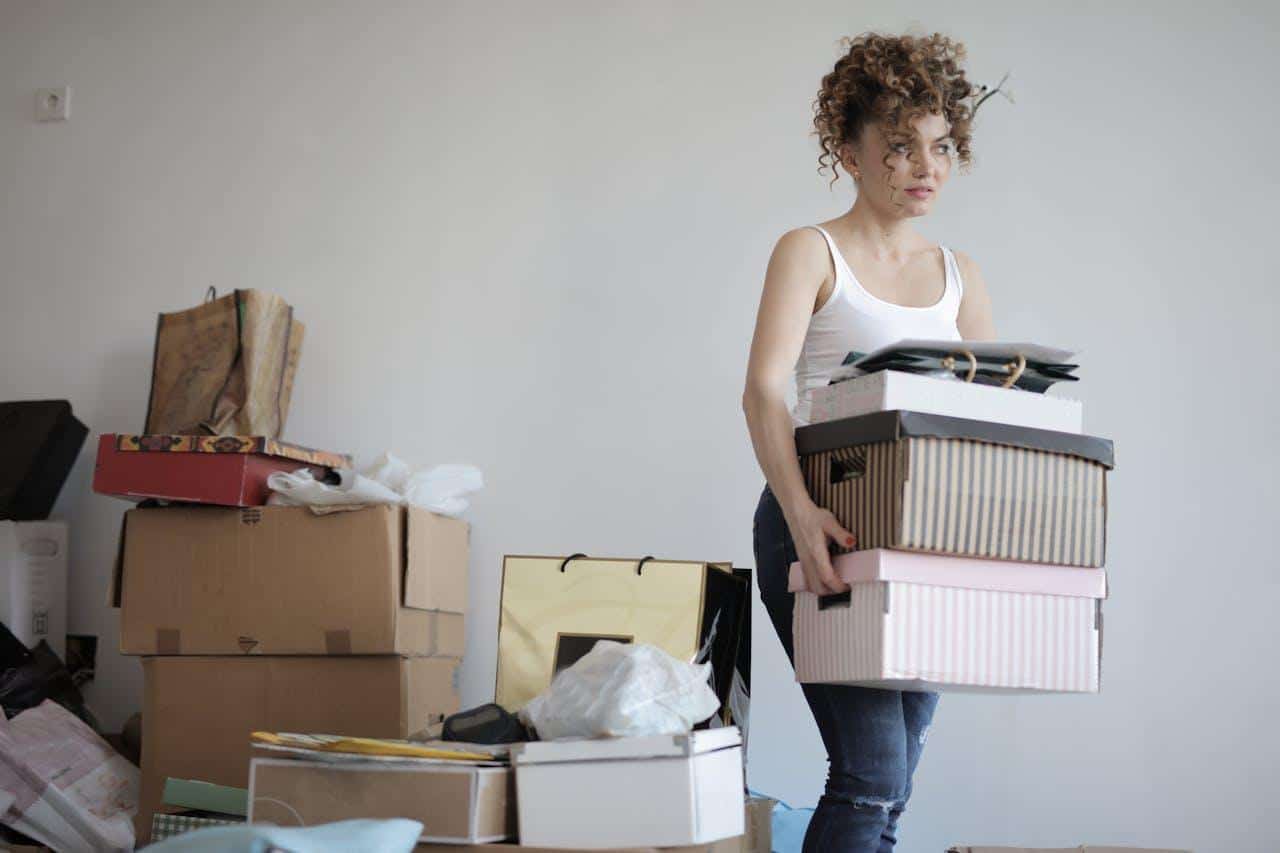Ever tried moving by yourself and suddenly realized just how much stuff you own? What starts as a few boxes and a to-do list can quickly turn into a full-on juggling act—with you playing every role. When there’s no one else around to help carry, sort, or make last-minute decisions, staying organized becomes more than a nice idea. It becomes your survival strategy.
Solo moves are becoming more common as people change jobs, shift lifestyles, or relocate for better opportunities. But just because you’re doing it alone doesn’t mean it has to feel overwhelming. With the right habits and a little planning, you can keep things under control—and maybe even enjoy the process.
In this blog, we will share how to stay on track during a solo move—so you can keep your cool, your stuff, and your sanity.
Start by Controlling the Chaos

Before a single box is packed, your goal should be this: less mess, more structure. That doesn’t mean turning your living room into a color-coded warehouse. It just means having a system.
Start by setting up zones. A pile for what’s staying, what’s going, and what you haven’t decided yet. That last one? Keep it small. Too many “maybes” lead to delays.
Next, think about space. Do you have enough room to sort and store boxes without feeling buried in them? If not, consider taking the pressure off your square footage. Exploring storage container rental options can make solo moves much more manageable.
These units offer flexibility when timing doesn’t line up perfectly. They give you space to pack at your pace. No scrambling to finish everything in a day and no mountain of boxes blocking your hallway.
Containers can be dropped off at your place, filled over time, and moved when you’re ready. It’s like hitting the pause button in the middle of your move—without having to sacrifice organization. And for solo movers juggling jobs, pets, or unpredictable schedules, that breathing room is huge.
Just getting clutter out of the way can help you think clearly. And when your space feels manageable, so does your move.
Make a Plan You’ll Actually Follow
It’s easy to write a to-do list that looks great on paper. The challenge is sticking to it. Especially when the couch won’t fit through the door and you’re two coffee cups away from giving up.
The best move plans are realistic, not rigid. Start with your final deadline. Then work backward. What needs to be packed by when? What can wait? Who needs to be notified and when?
Keep it simple. A notebook or phone app works fine. Check off tasks as you go. Those small wins will keep you moving forward.
Break big tasks into smaller ones. “Pack the kitchen” is huge. “Box the utensils” is manageable. And manageable is what you need when it’s just you doing the work.
Set goals for each day, and forgive yourself if you miss one. A solo move isn’t a race. It’s a process.
Pack Like a Future You Will Unpack It

Packing is easy to do badly. It’s tempting to throw things into boxes and tell yourself you’ll sort it out later. But in future you won’t love that plan.
Instead, pack by category and label clearly. Don’t just write “living room.” Write “books and charger cables.” The more detailed your labels, the faster you’ll find what you need later.
Keep essentials separate. Create a first-day box with the things you’ll need right away—like a phone charger, a towel, toothpaste, and a fork. This one should stay with you, not go in the container or moving truck.
Use small boxes for heavy things and large ones for light stuff. Your back will thank you. So will your stairs.
And don’t forget to protect breakables. Newspaper, bubble wrap, or even clothes can help. One broken plate might not ruin your move—but it might ruin your mood.
Use Tech to Fill in the Gaps
Moving alone doesn’t mean you’re totally unsupported. There are tools that make life easier.
Use delivery apps to order food when your kitchen is packed. Schedule supply runs online so you don’t waste time wandering hardware aisles. Set reminders for address changes, utility shutoffs, or final walkthroughs.
If your move involves a long drive, apps that track gas stations, rest stops, and hotels can keep things smooth. If you’re shipping items separately, tracking tools help you stay in control without losing sleep.
Technology won’t carry your couch—but it can help carry the stress.
Know When to Ask for Help
Doing a move on your own doesn’t mean doing every single thing without assistance. It just means you’re in charge. You can still call in reinforcements when needed.
Maybe that means hiring movers for one day. Or asking a friend to help with heavy items. Even a neighbor watching your pet can take pressure off your plate.
You don’t need a full team. You just need a few people you can rely on for the tough parts.
And if no one’s around? Plenty of companies offer short-term help. A couple of hours of professional support can make the rest of the move feel way more doable.
You’re still doing it solo. You’re just being smart about how.
Let the New Space Work for You
Once you arrive, give yourself time to settle. You don’t need to unpack everything in one night. Focus on what helps you feel normal.
Make the bed. Set up the coffee maker. Get the lights and Wi-Fi working. That’s your foundation. Then, unpack room by room. Don’t bounce around. Don’t open five boxes at once. Choose one area and stick to it. Create a space that feels safe, simple, and yours. After all, that’s what you’ve worked so hard to build.
At the end of the day, moving alone can feel like a lot. But it also teaches you what you’re capable of.
It’s about trusting yourself to stay organized, even when the packing tape runs out. It’s about making smart choices, leaning on the right tools, and not being afraid to ask for support when it counts.
And when the boxes are unpacked and the space is quiet, you’ll know: you didn’t just move—you moved forward. On your own terms.

